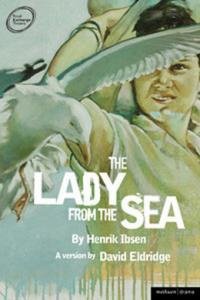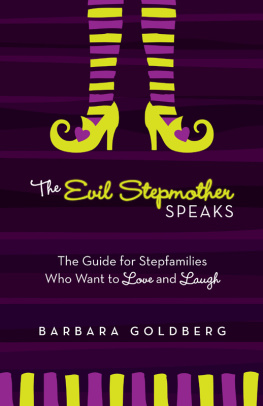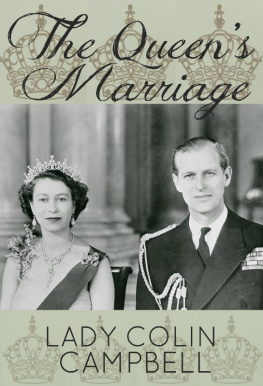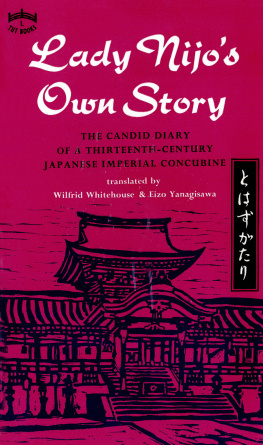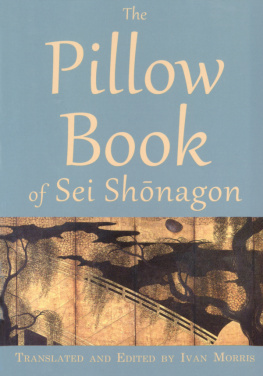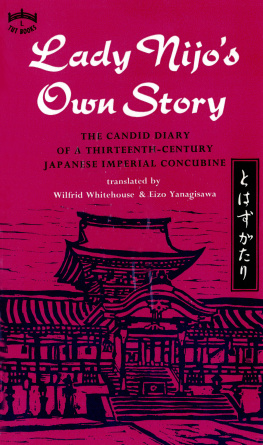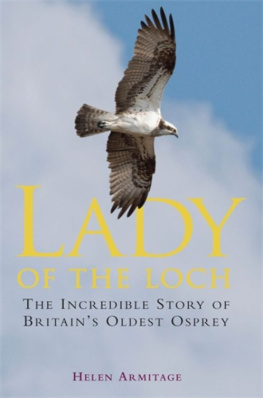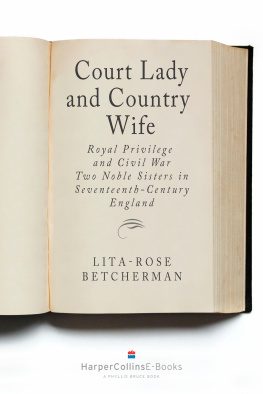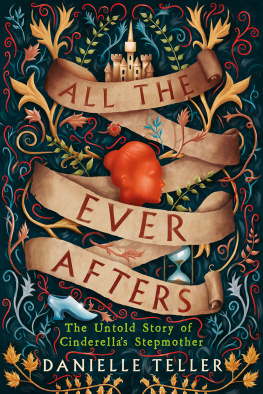THE TALE OF THE LADY OCHIKUBO
This family saga of a wicked stepmother has been called the worlds first novel. Written during the 10th century Heian Era and first translated into English and published by Kegan Paul in 1934, it follows the changing fortunes of the heroine, Lady Ochikubo, who is forced to live almost as a servant in her noble fathers house while the stepmother gives preference in all things to her own daughters. Beautiful and clever, the Lady is told she is ugly and stupid, and kept indoors so no one knows of her existence. The story of how the Lady marries a powerful nobleman of the royal court and triumphs over adversity is told with emotion, wit and humour. A worthy precursor to Murasaki Shikibus The Tale of Genji which was written some thirty years later, this masterpiece of Heian writing is a classic that richly deserves rediscovery. The work includes appendices on the literature and political organisation of the Heian Era.
THE TALE OF THE LADY OCHIKUBO
OCHIKUBO MONOGATARI
Translated by
Wilfred Whitehouse
and
Eizo Yanagisawa
First published in 2006 by
Kegan Paul International
This edition first published in 2010 by
Routledge
2 Park Square, Milton Park, Abingdon, Oxon, OX14 4RN
Simultaneously published in the USA and Canada
by Routledge
270 Madison Avenue, New York, NY 10016
Routledge is an imprint of the Taylor & Francis Group, an informa business
Kegan Paul International, 2006
Transferred to Digital Printing 2010
All rights reserved. No part of this book may be reprinted or reproduced or utilised in any form or by any electronic, mechanical, or other means, now known or hereafter invented, including photocopying and recording, or in any information storage or retrieval system, without permission in writing from the publishers.
British Library Cataloguing in Publication Data
A catalogue record for this book is available from the British Library
ISBN 10: 0-7103-1221-0 (hbk)
ISBN 13: 978-0-7103-1221-1 (hbk)
Publishers Note
The publisher has gone to great lengths to ensure the quality of this reprint but points out that some imperfections in the original copies may be apparent. The publisher has made every effort to contact original copyright holders and would welcome correspondence from those they have been unable to trace.
FOREWORD
T HE Tale of the Lady Ochikubo dates from the last quarter of the tenth century. It is therefore one of the earliest of that long line of monogatari which are the special glory of Japanese literature of the tenth and eleventh centuriesthe Heian Era. The earlier tales are fairy stories or accounts of wonderful and miraculous adventures or are strings of short and disconnected anecdotes and poems; there is nothing which could be called a novel. Ochikubo is the first novel; here for the first time we have a vivid and realistic chronicle of life, related with a wealth of natural dialogue. In no story of the Heian Era, either earlier or later, are there so few poems; in none such a complete absence of descriptions of the beauties of nature. The author keeps close to the human story he is chronicling. Further, in this story, dramatic situations succeed one another continuously, yet throughout the plot is wonderfully consistent. Each incident has its place in the mosaic of the plot; there is not a detail inconsistent with another, with the chronology or with the characters he is portraying. Ochikubo Monogatari also is the first which attempts any kind of characterisation. The author is strikingly successful in delineating the characters even of those who take but a minor part in the plot. As we might expect in a story of a wicked stepmother, there is emotion and pathos but a more prominent characteristic is the wit and humour, Such arc the marks of this masterpiece of Heian fiction; these are the merits which make it of outstanding importance in the history of Japanese literature.
THE FIRST BOOK
O NCE there was a ChnagonEver since her childhood not even the Chnagon had treated her with affection, and moreover as the Kita no Kata had her own way in everything in the house, the Lady Ochikubo had had to suffer many indignities. She had never had a foster-mother; no one had ever cared for her except a very sharp-witted girl named Ushiromi who had been the Ladys special attendant since her mothers death. The Lady and this attendant of hers were very devoted to each other and were never apart.
Now the Lady far excelled her lovingly-cared-for stepsisters in beauty, but she had never been outside among people, and no one knew of her existence. As she learned more of the world, and understood the sadness of her situation, she composed this sorrowful poem.
As the days pass by,
Each brings me new troubles;
In this world of care,
How can I live on, when
Filled is my heart with despair.
It was unfortunate that the Lady Ochikubo had never had anyone to teach her to play the kin; she would certainly have been an excellent player, as she was very sensitive and intelligent. Her mother, however, had taught her to play the s no koto until she was five or six years old, and as she played exceptionally well, the Kita no Kata allowed her own third son, a boy of about nine years old, to be taught occasionally by the Lady Ochikubo, as he had taken a great liking to playing this instrument.
In her spare time, the Lady Ochikubo had learnt to sew, and did this work very skilfully.
Good! her step-mother had said to her. It is very good for people who are not pretty to learn to do things.
She was kept busy making robes for the two sons-in-law and had no leisure at all, and as time went on, she had to work harder and harder, until at last she did not even have time enough for sleep at night, and if she worked a little slower than usual, her step-mother would reprove her.
If you do even this trivial task in such a languid manner, what do you think you are here for? she would say, and cause the Lady Ochikubo to burst out weeping.
Why is it that there is no way for me to die? the Lady Ochikubo would say to herself.
The ceremony of putting on the skirt was performed for the Third Lady, and soon afterwards she was married to the Kurdo no Shsh. This caused infinitely more work for everyone; the Lady Ochikubo had even less leisure now, and her existence became more and more dreary. Few young and lovable people have to work as hard as she! She was despised by all; she felt forlorn and she wept over her sewing.
No longer do I
Wish to live in this world, but
I can find no way
To put an end to this my
Miserable existence.
As Ushiromi had long hair and was very pretty, she was forced to go into the service of the Third Lady. She felt very sad at this.
It was to serve you and you alone that I refused to be adopted by my aunt. Why then must I leave you and go to serve another? she said with tears.
Whats that? exclaimed the Lady Ochikubo. As long as we live in the same house, everything will be just the same as it is now. And you will have much more elegant clothes than you now have; you should be very glad about that.


